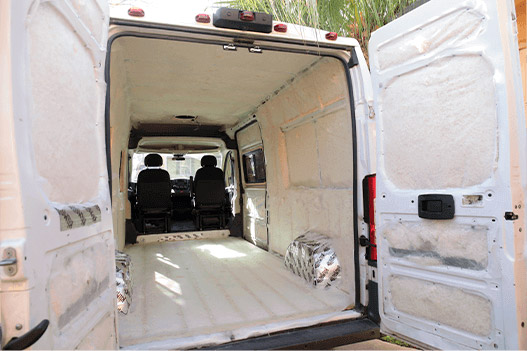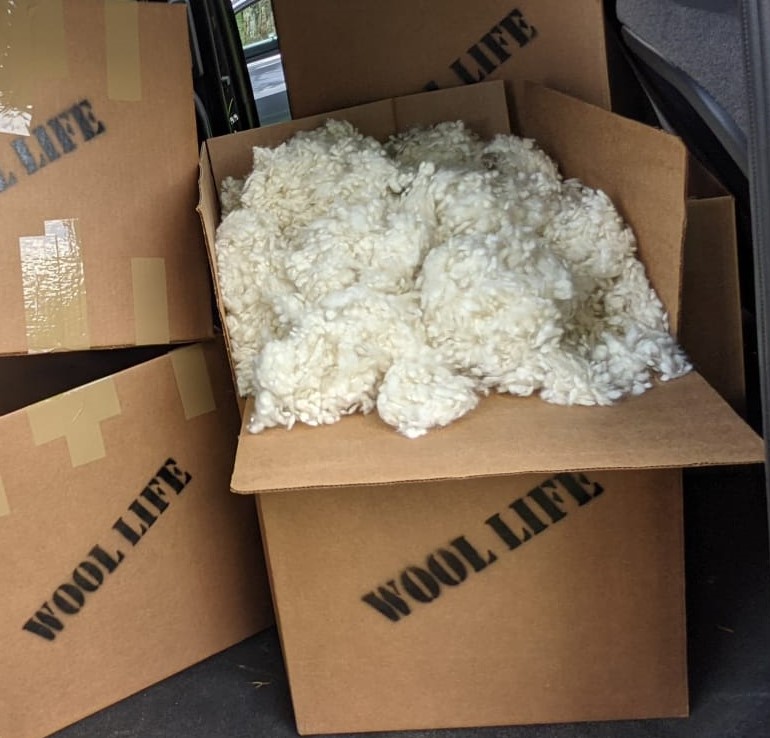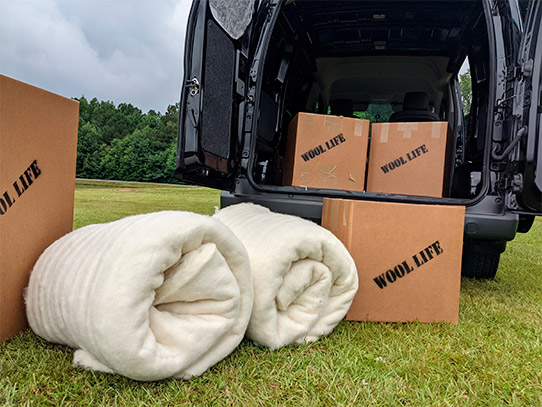The Best Insulation for Vans
What should I use to insulate my campervan?
Welcome to the most controversial topic when building out your van! Beginners, experts, and everyone in between seems to have a strong (and often self-promoting) opinion of what is the best insulation for vans. Insulating your van truly is one of the most important things to consider when you are planning to build your dream-home on wheels, but how do you know which is the best option for you and your van?
We’re here to cut through the fluff and provide real information to help you decide what is the best insulation for you based on your values, desires, and goals. We’re also going to focus on insulation that is best for the good of your van, your pocketbook, your health, and your planet.

Why Insulate Your Van?
Vans are full of wonderful adventure-life possibilities, but because of their thin conductive metal walls, they easily transfer heat. If your van is not adequately insulated, then when you are in extreme hot or cold climates, you will also have extreme discomfort. Additionally, poor insulation can result in excess moisture and condensation, which can lead to mold growth behind your walls. You want to be sure to have a quality insulation between your metal van walls and your living space, so that you won’t be wasting energy heating or cooling the great outdoors, and also, so you will stay comfortable and healthy.
What Type of Insulations are there? What to consider?
Foam, Fiberglass, Denim, Reflectix, Sheep’s Wool, Rockwool – There are so many insulation options to choose from! What are the most important things to consider when you are going to be insulating your small van space? We recommend that you consider the following points when you are choosing the van insulation that is best for you and your adventures:
- R-Value
- Toxicity
- Moisture Management
- Cost / Value
- Sustainability
|
Fiberglass |
Rockwool |
Foam |
Denim |
Sheep’s Wool |
|
|
R-Value (per inch) |
R-2.9 |
R-3.3 |
R-6 |
R-3.5 |
R-4.1 |
|
Health/Toxicity |
Toxic |
Toxic |
Toxic |
Non-Toxic |
Non-Toxic |
|
Moisture Control |
None |
None |
Blocks Moisture |
None |
Manages Moisture |
|
Cost |
$ |
$$ |
$$$ |
$$ |
$$ |
|
Sustainability |
Not Sustainable |
Not Sustainable |
Not Sustainable |
Sustainable |
Very Sustainable |
R-Value (Insulation Value)
R value is a measure of the thermal resistance of a material in how well it can stop heat transfer. The higher the R-Value, the better the thermal resistance, and the more comfortable your van will stay with the least amount of energy used. You want an insulation product that has a high R-Value, but you also want to be aware of the other points. For example, whereas closed cell spray foam ranks high on R-Value, it is also very high in toxin level, which can be really concerning since a van is such a small living area. Sheep’s wool from Wool.Life has the highest R-Value for wool batting – R- 4.13 per inch, and it doesn’t contain any toxins.


Toxicity
One of the most concerning things in the insulation industry is the blatant toxicity of the products. Building materials are “innocent until proven guilty”, meaning they can put all kinds of untested and unhealthy binders, dyes, and petro-chemicals in products without giving any kind of warning about their possible negative health effects. Because your cargo van space is a relatively small space, and a living space, you need to be very cautious about what materials you use in your build. You don’t want to take respiratory aggravators and health risks from the polluted cities to your National Park explorations! Use natural materials anywhere you can – This includes insulation as there are a few totally natural options. Insulations with a surprisingly high toxicity – Foam (spray form or rigid foam board), fiberglass, and yes, even the lauded rockwool.
Moisture Resistance/Management
Have you ever noticed when you are camping in a tent, that when you wake up, there is a lot of moisture inside? As humans, we produce a lot of moisture as we breathe, and this is especially noticeable in small spaces like our vans. This is compounded if you are heating water for your morning matcha or coffee, washing dishes, or showering in your van. If you are producing a lot of moisture in your van (and if you are living in it, you are) then you should definitely go with an insulation that can manage moisture. Denim is a natural product (apart from the dyes), but doesn’t handle moisture well at all. Spray foam doesn’t let any moisture through at all, so it will keep the moisture in your van. Here again, sheep’s wool is the winner in this category. Wool fibers manage moisture by absorbing it at high RH levels (relative humidity) and releasing the moisture when the RH drops below 65%.
Sustainability
For some of us, this last point is just a bonus. For others of us, it’s an absolute must. Most of us have realized that buying large stationary houses that trap us into a mortgage and a lifetime of 9-5, M-F is not sustainable or desirable. We want the freedom to travel and explore this planet, and that’s part of what makes us vanlifers. Tending and stewarding this planet is a responsibility that comes with enjoying it. Insulating a van with products that can never actually be disposed of or recycled is a blight on vanlifers everywhere. That’s where foams and fiberglass are really lacking, besides the toxicity factor. Denim and sheep’s wool are the most sustainable and renewable options for insulating vans. Sheep’s wool especially is, because there are no dyes added and because it is compostable and give nutrients back into the soil if you ever needed to get rid of it. Beyond that, sheep regrow their fleeces every year and need them to be sheared for comfort. *Note: Be sure to get wool that is sourced from certified farms for animal welfare to reward the farmers who are giving their sheep the best lives.
Cost
Apples to apples, always apples to apples. Naturally you want the best insulation for the best price. Fiberglass is definitely the cheapest insulation option, but with marks against it on Toxicity, Moisture Management, R-Value, and Sustainability, it’s also definitely not the best. An effective and high quality insulation is certainly going to come at a more premium price point, but you may be surprised to find that the prices are actually quite reasonable. The better the insulation, the less energy consumption of your van, which means you will be spending less to heat or cool your adventure vehicle. Also, the better the insulation, the more comfortable you will be. Finally, the better the insulation, the more healthy you and your travel buddies will be – and you can’t put a price on that. Locally grown, truly organic apples are going to cost more than run of the mill, mass produced, street apples, but they will also taste better, and be better for you! A premium insulation will cost you a bit more, at least initially.
Cost Saving Bonus – If you insulate your campervan with sheep’s wool, you have the added bonus of being able to save on a sound dampener or deadener. Wool has excellent sound absorption and attenuation abilities so you can cut costs and pass on the sound mats and extra work.

Conclusion
These are the top 5 things to consider as you plan the insulation stage of your van build. You might have gathered that we are a bit partial to sheep’s wool as the best insulation for your van, and that’s because it ticks all the boxes for us. We are always on the lookout for the healthiest, most sustainable, and effective forms of insulation. As we see it now, sheep’s wool is the best option to insulate your van in a way you can feel good about, and feel good in!
Ready to buy the best insulation for your van? We recommend you head over to Wool.Life Van Life. The team there is always quick to answer your questions and they’ve even given us a good-will promo code that you can use for a discount. Just type in BLOG5 in the checkout for your 5% discount, and then get on the road!
Happy travels!

